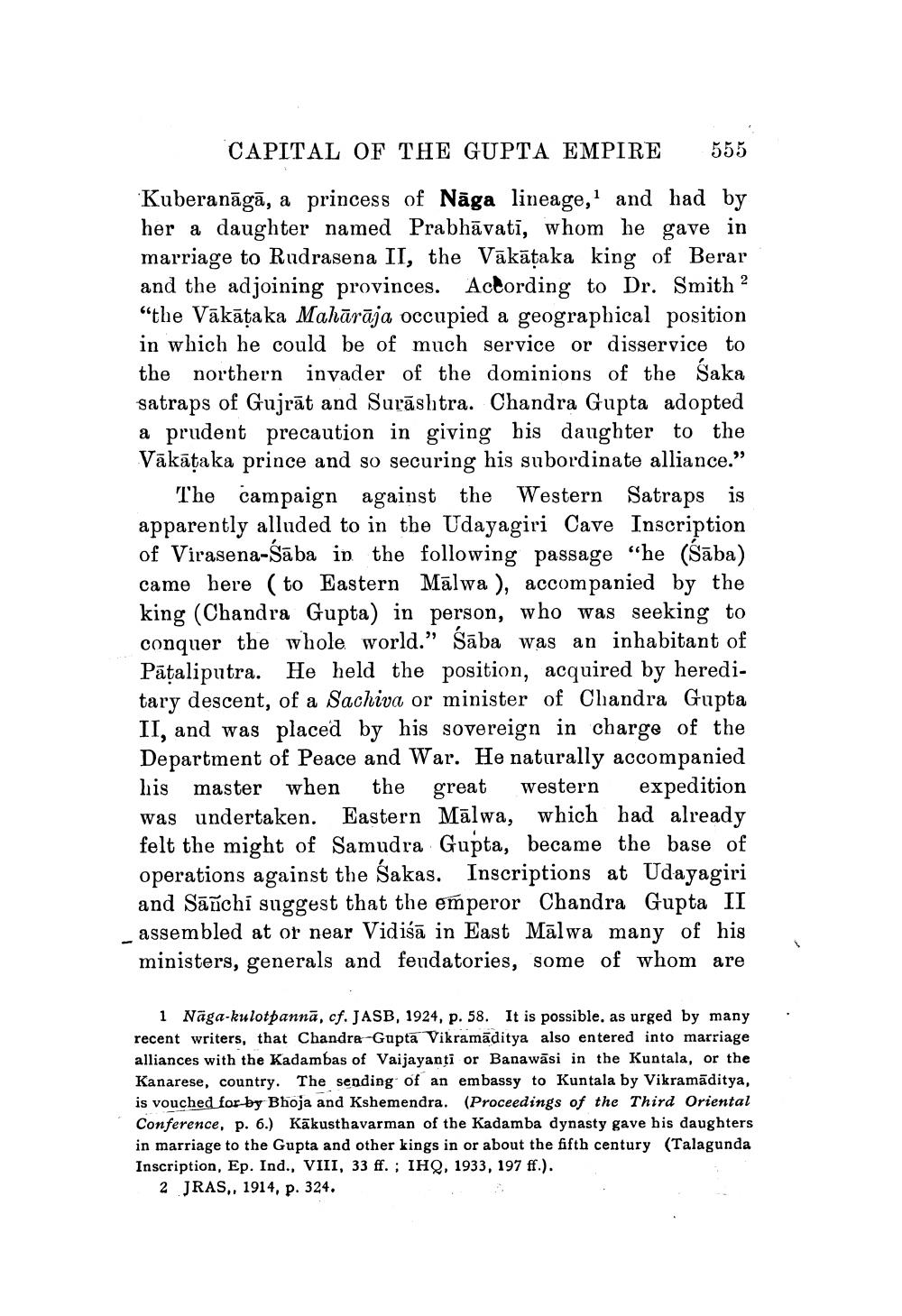________________
CAPITAL OF THE GUPTA EMPIRE
555
Kuberanāgā, a princess of Nāga lineage, and had by her a daughter named Prabhāvatī, whom he gave in marriage to Rudrasena II, the Vākāțaka king of Berar and the adjoining provinces. According to Dr. Smith ? “the Vākāțaka Mahārāja occupied a geographical position in which he could be of much service or disservice to the northern invader of the dominions of the Saka satraps of Gujrāt and Surāshtra. Chandra Gupta adopted a prudent precaution in giving his daughter to the Vākāțaka prince and so securing his subordinate alliance.”
The campaign against the Western Satraps is apparently alluded to in the Udayagiri Cave Inscription of Virasena-Sāba in the following passage "he (Šāba) came here ( to Eastern Mālwa ), accompanied by the king (Chandra Gupta) in person, who was seeking to conquer the whole world." Sāba was an inhabitant of Pataliputra. He held the position, acquired by heredi. tary descent, of a Sachiva or minister of Chandra Gupta II, and was placed by his sovereign in charge of the Department of Peace and War. He naturally accompanied his master when the great western expedition was undertaken. Eastern Mālwa, which had already felt the might of Samudra Gupta, became the base of operations against the Sakas. Inscriptions at Udayagiri and Sāñchí suggest that the emperor Chandra Gupta II - assembled at or near Vidišā in East Mālwa many of his ministers, generals and feudatories, some of whom are
1 Naga-kulotpannā, cf. JASB, 1924, p. 58. It is possible. as urged by many recent writers, that Chandra-Gupta Vikramāditya also entered into marriage alliances with the Kadambas of Vaijayanti or Banawāsi in the Kuntala, or the Kanarese, country. The sending of an embassy to Kuntala by Vikramāditya, is vouched for by Bhoja and Kshemendra. (Proceedings of the Third Oriental Conference, p. 6.) Kākusthavarman of the Kadamba dynasty gave his daughters in marriage to the Gupta and other kings in or about the fifth century (Talagunda Inscription, Ep. Ind., VIII, 33 ff. ; IHQ, 1933, 197 ff.).
2 JRAS, 1914, p. 324.




